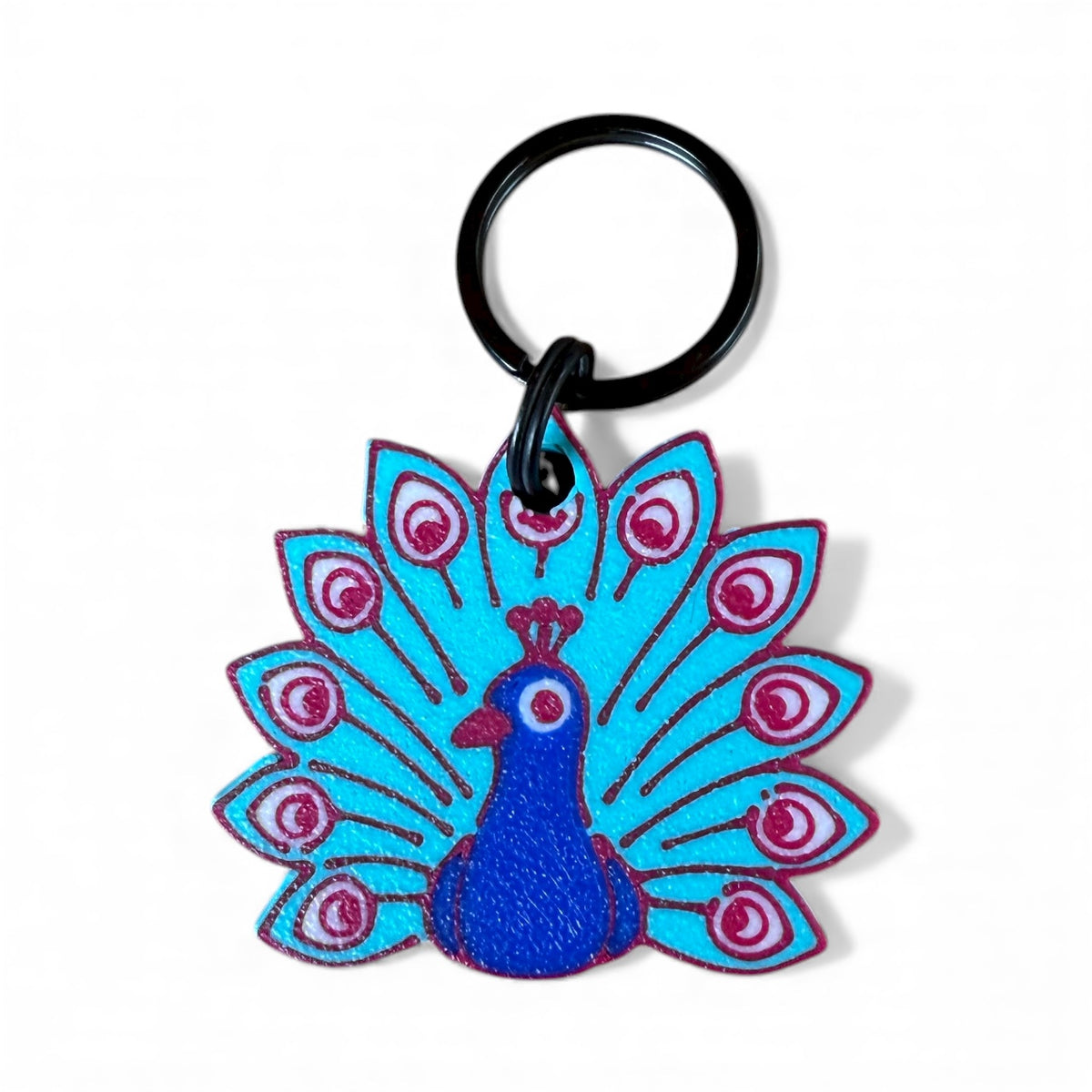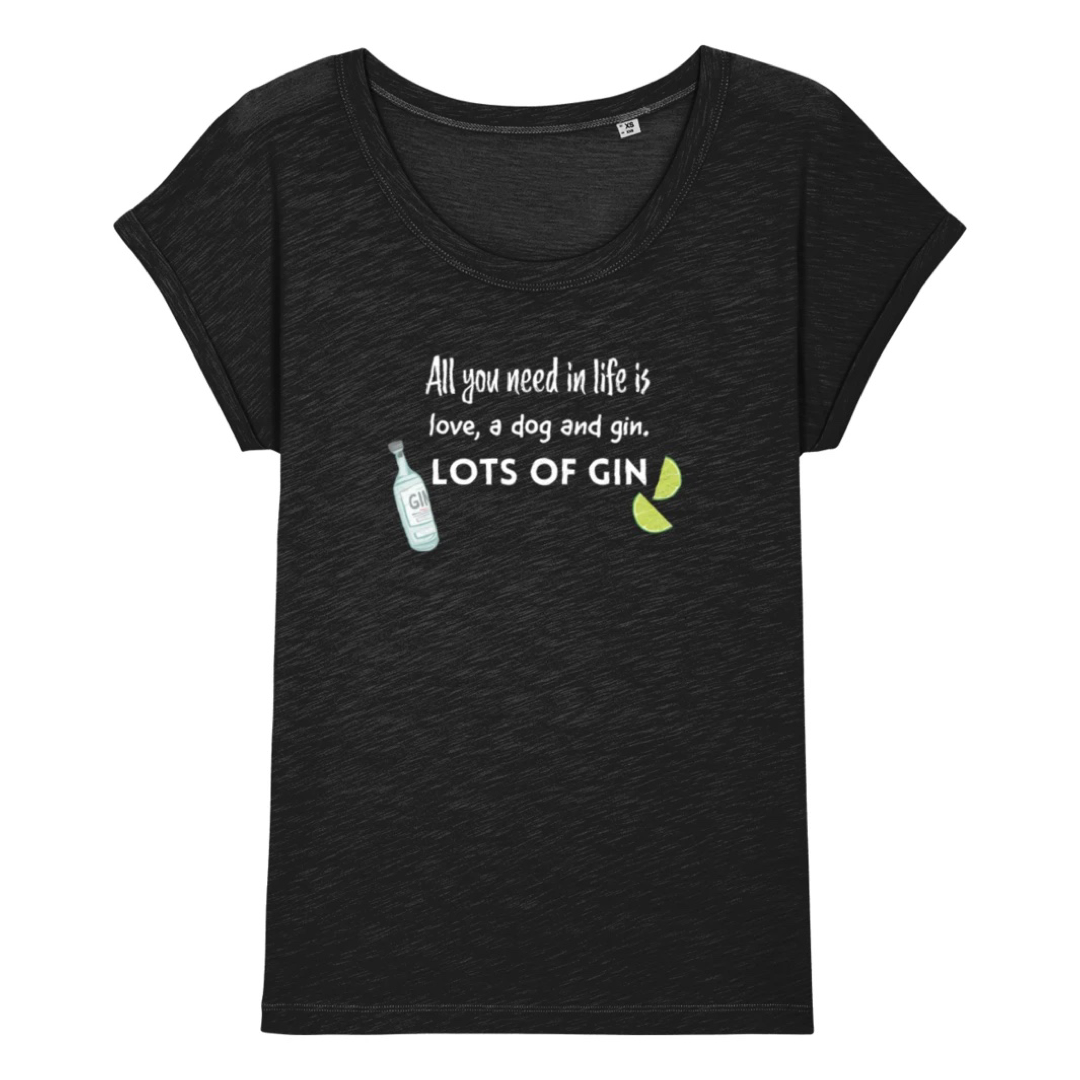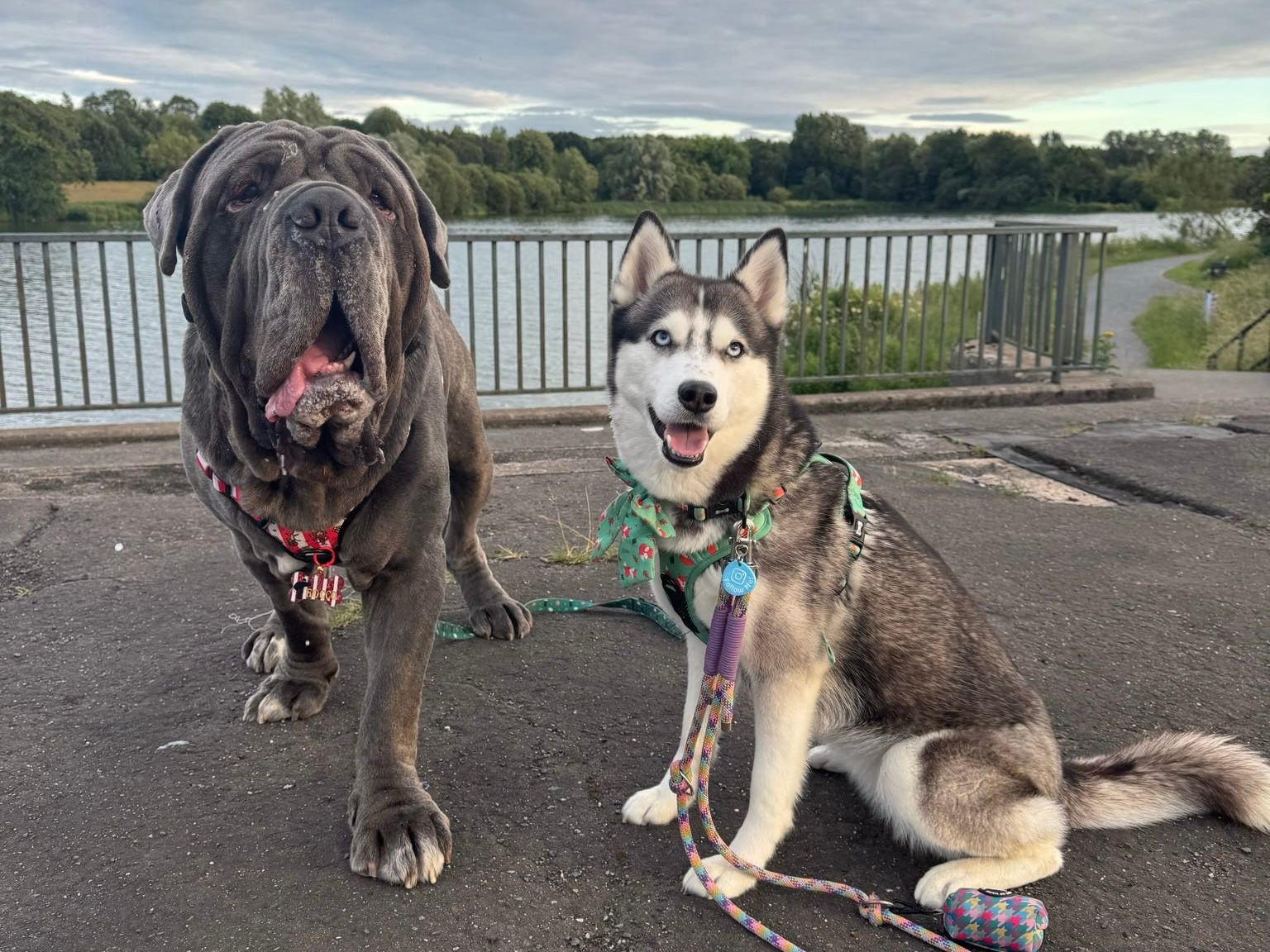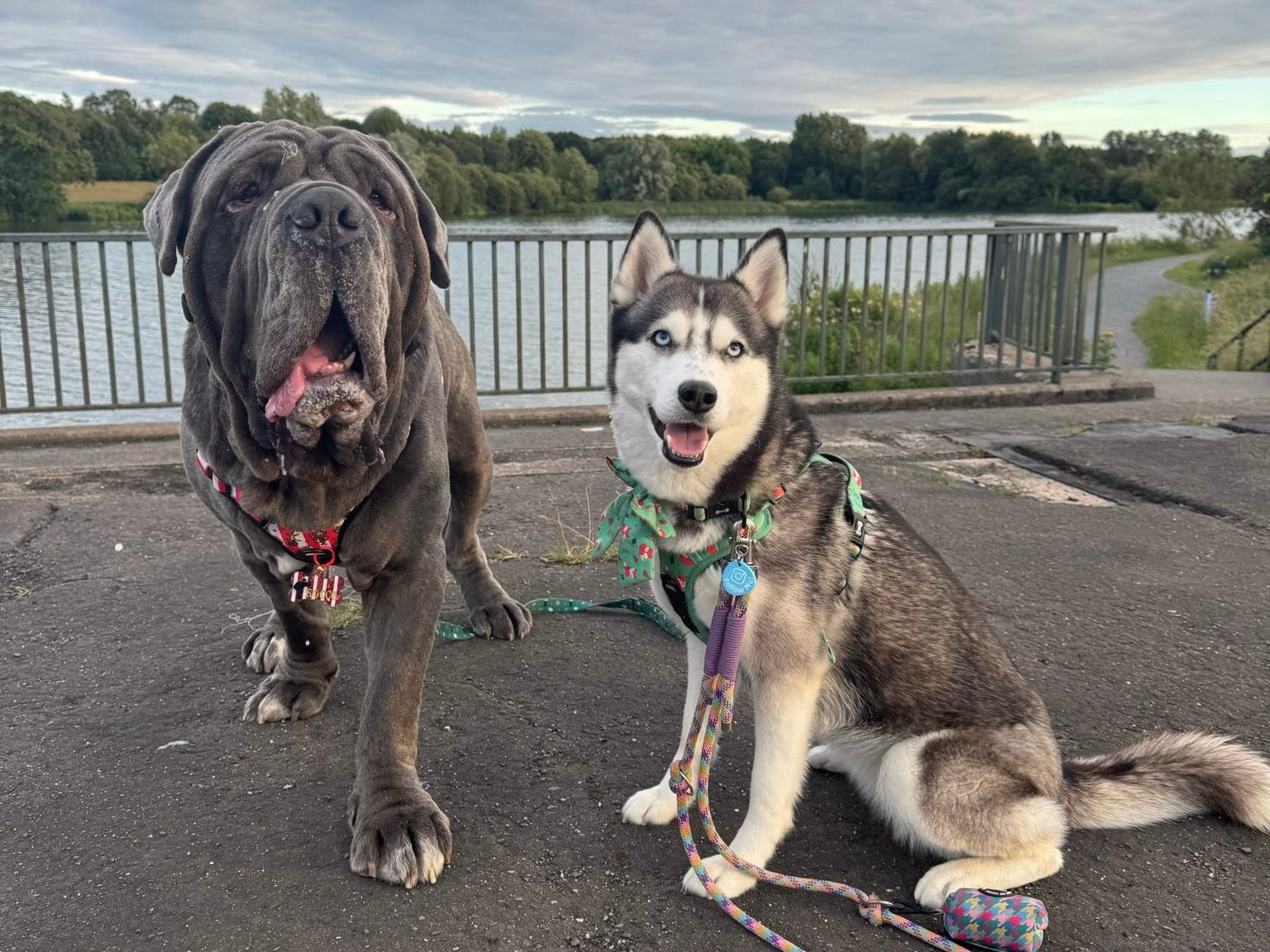
Picking the right big dog harness might seem like a straightforward task for owners across the UK. Yet with more than 60 percent of large breed dogs developing joint or back issues during their lives, the harness you choose could have a huge effect on your dog’s future wellbeing. Most owners focus on flashy colours or the brand name. What actually matters most is how that harness shapes your dog’s movement, comfort and safety every single time you step outside together.
Table of Contents
Quick Summary
| Takeaway | Explanation |
| Choose appropriate harness design for biomechanics | A well-fitted harness influences your dog’s stride and weight distribution, preventing musculoskeletal issues, especially in larger breeds. |
| Prioritise proper fitting and adjustments | Use the ‘two-finger rule’ to ensure the harness fits snugly without chafing, allowing full range of motion for comfort and safety. |
| Look for durable materials and safety features | Select harnesses made from high-strength materials and those with safety features like quick-release mechanisms to ensure longevity and security. |
| Utilise positive reinforcement during walks | Encourage calm behaviour by rewarding your dog instantly with treats or praise, establishing a positive association with walking. |
| Manage distractions effectively while walking | Gradually expose your dog to varying environments, employing focus training techniques to enhance attention and reduce distracting behaviour. |
Why Big Dog Harnesses Matter for UK Owners
Choosing the right big dog harness is more than a simple accessory purchase. It’s a critical decision that impacts your dog’s comfort, safety, and overall walking experience. Large breed owners face unique challenges when selecting the perfect harness, and understanding these nuances can make a significant difference in your daily walks and your dog’s wellbeing.
The Biomechanical Benefits of Proper Harness Design
A well-designed big dog harness does far more than just attach a lead. Research published in PubMed reveals that harness design profoundly influences canine biomechanics. The study demonstrated that a properly fitted harness can significantly impact a dog’s stride length and weight distribution, preventing potential musculoskeletal issues that are particularly relevant for larger breeds.
For big dogs, the distribution of pressure across their body is crucial. The American Kennel Club highlights that an incorrectly fitted harness can lead to unnecessary strain on the neck and back. Large breeds are especially susceptible to these issues, making the selection of a high-quality harness not just a matter of convenience, but of long-term health and comfort.
Protecting Your Dog’s Physical Health
Large dogs put more stress on their bodies during walks, which means the right harness becomes a critical protective tool. FOUR PAWS International emphasizes that a well-designed harness protects sensitive areas like the cervical spine, thyroid, and trachea by distributing pressure evenly across the chest and shoulders.
This even weight distribution is particularly important for breeds prone to joint issues or those with existing mobility challenges. A good harness can help prevent potential injuries and provide better control during walks, which is especially crucial for powerful large breed dogs that might be more challenging to manage.
Beyond Physical Benefits: Training and Control
A big dog harness is more than a safety device. It’s a training tool that can help owners maintain better control and communication with their canine companions. For large breeds that might be strong or energetic, a harness provides a more balanced and humane method of guidance compared to traditional collar-based walking.
By spreading pressure across a broader area of the dog’s body, these harnesses reduce the risk of neck strain and provide more immediate feedback during training. This is particularly beneficial for owners working on loose-leash walking or managing dogs with high energy levels.
Ultimately, selecting the right big dog harness is an investment in your dog’s physical health, comfort, and your relationship as a team. It’s about finding that perfect balance between functionality, comfort, and style that makes every walk an enjoyable experience for both you and your four-legged friend.
Key Features to Look for in a Big Dog Harness
Selecting the ideal big dog harness requires careful consideration of multiple factors beyond simple aesthetics. Your choice impacts not just comfort but your dog’s overall walking experience and safety. Understanding the critical features will help you make an informed decision that meets both your and your dog’s needs.
Structural Integrity and Material Quality
Durability is paramount when choosing a big dog harness. Veterinary research from the University of Bristol indicates that large breed dogs exert significantly more force during walks, requiring harnesses constructed from robust materials that can withstand substantial strain.
Look for harnesses made from high-strength materials like reinforced nylon, thick polyester webbing, or military-grade synthetic fabrics. These materials offer excellent resistance to wear and tear while remaining lightweight. The International Working Dog Breeding Association recommends selecting materials that provide both flexibility and strength, ensuring the harness can handle your dog’s active lifestyle without compromising comfort.
Key material considerations include:
-
Abrasion resistance: Prevents quick degradation
-
Moisture-wicking properties: Keeps your dog comfortable during active periods
-
Quick-drying fabric: Essential for UK’s unpredictable weather conditions
Ergonomic Design and Fit
The perfect big dog harness must offer an exceptional fit that distributes pressure evenly across your dog’s body. An ill-fitting harness can cause chafing, restrict movement, or create potential injury risks. Professional dog trainers recommend multiple adjustment points to ensure a customized fit for different body shapes and sizes.
Ergonomic features to prioritize include:
-
Adjustable chest and belly straps
-
Padded contact points
-
Breathable mesh panels
-
Reflective strips for visibility
The strategic placement of buckles and attachment points significantly influences the harness’s functionality. Multiple connection points allow for better control during walks, particularly with strong or energetic large breed dogs.
Safety and Functional Extras
Beyond basic design, modern big dog harnesses offer advanced safety features that enhance your walking experience. Canine Safety Research Network suggests looking for harnesses with additional protective elements that go beyond standard design.
Consider harnesses that include:
-
Quick-release mechanisms
-
Non-restrictive design
-
Integrated handle for additional control
-
Compatible with car safety systems
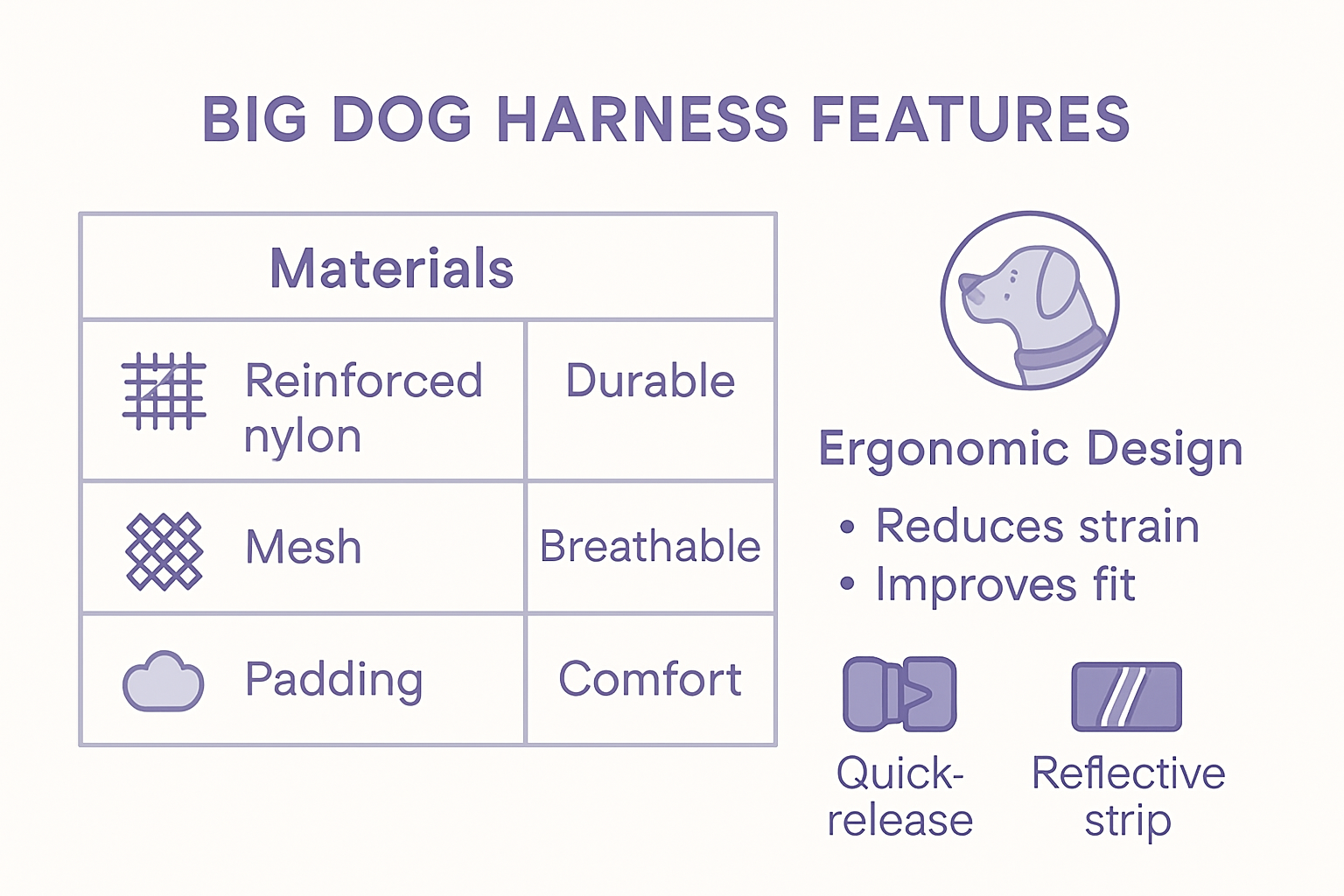
These features transform a simple walking accessory into a comprehensive safety tool. The integrated handle, for instance, provides extra support when navigating challenging terrain or assisting dogs with mobility challenges.
Remember that the best big dog harness is one that balances comfort, durability, and functionality. It should feel like a natural extension of your dog’s body, allowing unrestricted movement while providing you with confidence and control during every walk.
To help you compare the most important features when choosing a big dog harness, the following table summarises key qualities to consider, as detailed in the article:
| Feature | Importance for Big Dogs | Example Details/Benefits |
| Structural Integrity & Material | Ensures durability for strong pullers, withstands heavy use | Reinforced nylon, military-grade fabrics |
| Ergonomic Design & Fit | Distributes pressure evenly, avoids injury and discomfort | Multiple adjustment points, padded contact areas |
| Safety Extras | Increases security, allows for emergencies | Quick-release buckles, integrated handles |
| Visibility & Weather-Resistance | Enhances safety in low light and UK weather | Reflective strips, quick-drying, moisture-wicking |
| Control & Training Support | Eases guiding strong or energetic dogs, aids positive training | Multiple leash points, non-restrictive design |
Fitting and Adjusting Your Dog’s Harness Safely
Fitting a harness correctly is a critical step that many dog owners overlook. An improperly fitted harness can lead to discomfort, potential injury, and reduced effectiveness during walks. Understanding the nuanced process of measuring, selecting, and adjusting a harness will ensure your large dog’s safety and comfort.
Precise Measurement and Sizing
The American Kennel Club recommends using the ‘two-finger rule’ when assessing harness fit. This method involves checking that you can comfortably slide two fingers between the harness and your dog’s body. This approach ensures the harness is neither too tight to restrict movement nor too loose to potentially slip off.
To accurately measure your dog for a harness, you’ll need three key measurements:
-
Chest circumference: Measure around the widest part of the chest
-
Neck circumference: Measure where a collar would typically sit
-
Body length: Measure from base of neck to base of tail
PetMD emphasizes that these measurements vary significantly between breeds. A Great Dane will require different sizing considerations compared to a Labrador Retriever, despite both being large breeds. Always consult the manufacturer’s specific sizing chart and consider your individual dog’s build.
Adjustment Techniques and Comfort Strategies
Once you’ve selected the correct size, proper adjustment becomes crucial. The RSPCA South Australia suggests using positive reinforcement during the harness introduction process. This means creating a pleasant association by offering treats and praise while putting on the harness.
Key adjustment strategies include:
-
Symmetrical positioning: Ensure the harness sits evenly on both sides of the body
-
No chafing zones: Check for potential rubbing points around armpits and chest
-
Flexibility check: Confirm the harness allows full range of motion
Pay special attention to adjustment points. Most quality harnesses feature multiple buckles and straps that allow precise customization. Start by loosening all straps, place the harness on your dog, and then gradually tighten each section.
Safety Checks and Ongoing Maintenance
A harness is not a set-it-and-forget-it accessory. Regular safety checks are essential to maintain optimal performance. Inspect the harness monthly for signs of wear, checking stitching, buckles, and attachment points.
Consider these maintenance tips:
-
Fabric inspection: Look for fraying or weakening materials
-
Buckle functionality: Ensure quick-release mechanisms work smoothly
-
Fit reassessment: Recheck measurements every few months, especially for growing dogs or those experiencing weight changes
Remember that a perfectly fitted harness should feel like a natural extension of your dog. It should provide security without compromising comfort, allowing your large breed companion to move freely and confidently during every adventure.
The following table summarises the main steps and strategies for correctly fitting and adjusting your big dog’s harness, as outlined in the article:
| Step | Action/Check | Benefit |
| Measurement | Measure chest, neck, and body length | Ensures accurate harness sizing |
| Fit Assessment | Apply two-finger rule | Prevents tightness/chafing or risk of slipping off |
| Adjustment | Customise all straps and buckles | Guarantees comfort and secure fit |
| Comfort Check | Look for no chafing, allow full movement | Avoids rubbing or restriction |
| Positive Reinforcement | Reward during introduction | Builds a pleasant harness association |
| Ongoing Maintenance | Inspect fabric, buckles, and fit regularly | Maintains safety and prolongs harness lifespan |
Top Tips for Walking Big Dogs with a Harness
Walking a large dog requires more than just physical strength. It demands strategic techniques, understanding your dog’s behaviour, and using the right equipment to ensure a safe and enjoyable experience for both of you. A harness can be an excellent tool for managing and training large breed dogs when used correctly.
Positive Reinforcement and Training Techniques
The American Humane Society recommends using positive reinforcement as the cornerstone of successful dog walking. This means rewarding calm behaviour and creating a positive association with walking.
Key positive reinforcement strategies include:
-
Consistent treat rewards: Carry high-value treats to reward good walking behaviour
-
Verbal praise: Use an enthusiastic, encouraging tone when your dog walks calmly
-
Immediate feedback: Reward good behaviour instantly to reinforce the connection
One particularly effective technique is the ‘be a tree’ method. When your dog pulls, stop moving completely. Resume walking only when the leash becomes slack, teaching your dog that pulling does not get them where they want to go. This method requires patience but can significantly improve leash manners.
Harness Positioning and Walking Mechanics
The Wisconsin Humane Society emphasizes the importance of proper harness selection and positioning. A front-clip harness that does not cross the dog’s shoulders can provide better control without restricting natural movement.
Consider these walking mechanics:
-
Front-clip advantage: Redirects pulling behaviour more effectively than back-clip harnesses
-
Even weight distribution: Ensures comfort and reduces strain during walks
-
Prevent slip-out risks: Regularly check harness fit to avoid potential escapes
Body positioning matters too. Walk slightly ahead or beside your dog, maintaining a loose leash. This helps establish you as the leader while giving your dog enough freedom to explore their environment comfortably.
Managing Environmental Distractions
Large dogs can become easily distracted, making walks challenging. Developing strategies to manage these situations is crucial for maintaining control and ensuring a pleasant walking experience.
Effective distraction management techniques include:
-
Gradual exposure: Start in quieter areas and slowly introduce more stimulating environments
-
Focus training: Teach your dog to look at you when encountering distractions
-
Alternate walking routes: Prevent boredom and overstimulation by varying your walking paths
Practice short, frequent training sessions to improve your dog’s attention and responsiveness. Use your harness as a tool for gentle guidance, not punishment. Remember that consistency, patience, and positive reinforcement are key to successful walks with your large breed companion.
Ultimately, walking with a big dog is about building a relationship of trust and communication. Your harness is more than just a walking accessory. It’s a bridge between you and your dog, facilitating understanding, safety, and mutual enjoyment during your outdoor adventures.
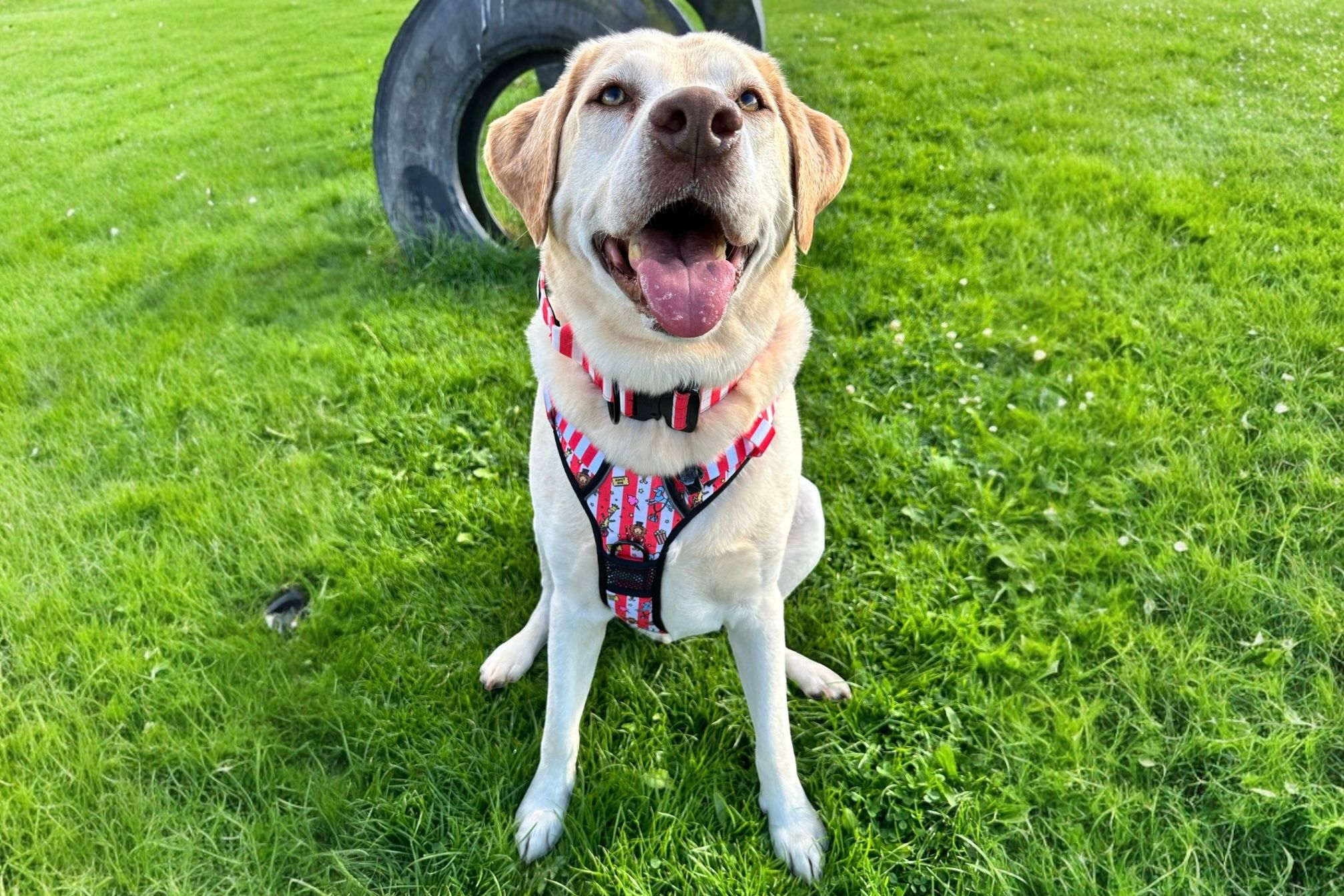
Frequently Asked Questions
What should I look for when choosing a big dog harness?
When selecting a big dog harness, prioritise structural integrity, ergonomic design, and safety features. Look for durable materials, adjustable straps for a proper fit, and additional features such as reflective strips for visibility and quick-release mechanisms for safety.
How do I properly fit a big dog harness?
To fit a big dog harness correctly, take three measurements: chest circumference, neck circumference, and body length. Use the ‘two-finger rule’ to ensure it fits snugly without being too tight, allowing for comfortable movement without risk of slipping off.
What are the benefits of using a harness for large dogs instead of a collar?
A harness distributes pressure more evenly across your dog’s body, reducing strain on the neck and back, which is particularly beneficial for large breeds. It also provides better control and is helpful during training, making walks more comfortable for both you and your dog.
How can I manage distractions while walking my big dog?
To manage distractions during walks, start in quieter environments, gradually expose your dog to busier areas, and employ focus training. Use positive reinforcement to encourage attention on you when encountering distractions, and vary your walking routes to keep your dog engaged.
Transform Your Big Dog Walks with the Right Harness Solution
You have learned how the wrong big dog harness can lead to discomfort, safety risks, and even joint problems over time. As the article highlights, finding a harness with proper ergonomics, durable construction, and tailored fit makes a world of difference for both you and your dog. But searching for a harness that looks good while truly protecting your pet’s health is a real challenge in the UK market.
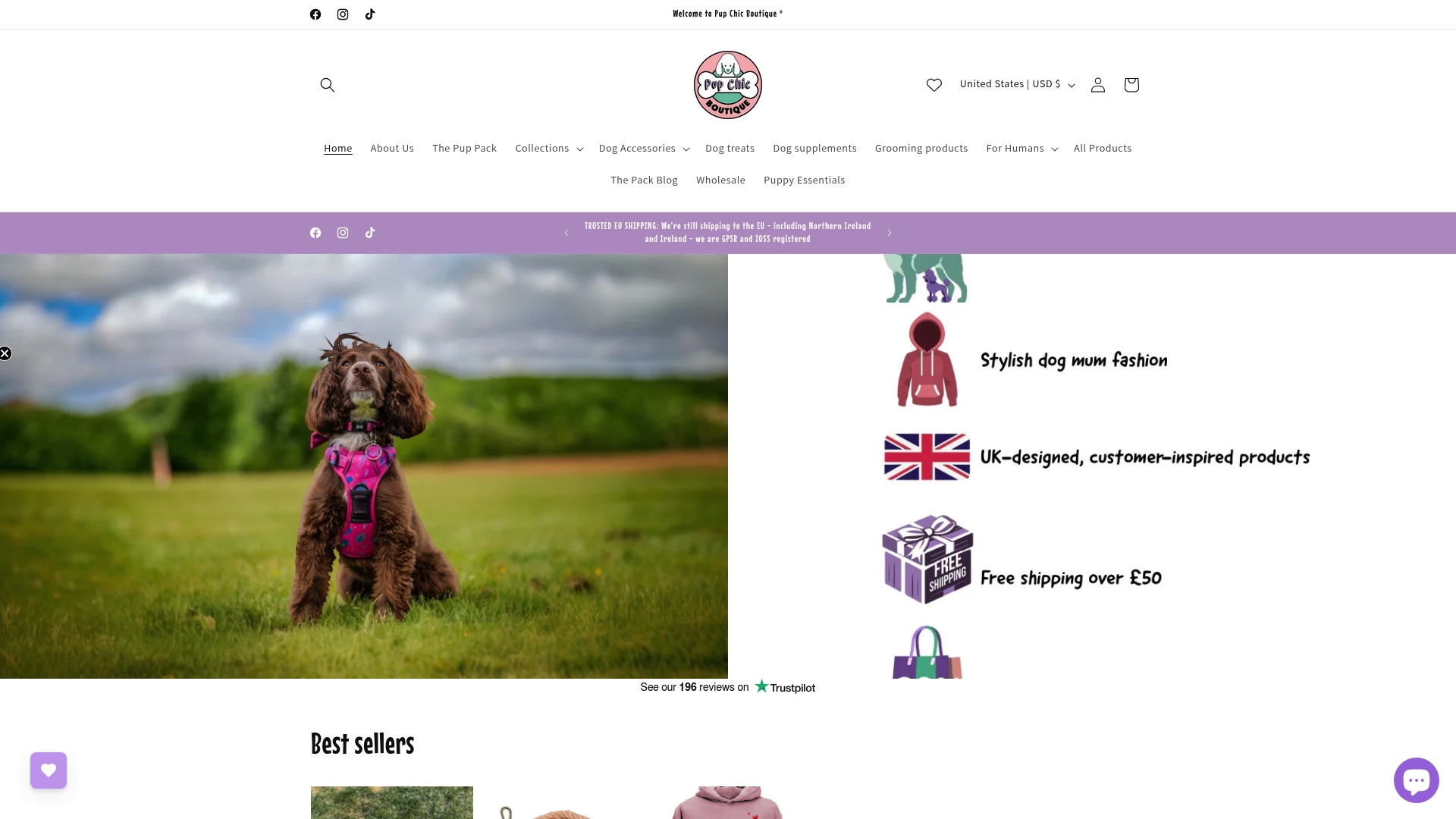
At Pup Chic Boutique, you will find dog accessories designed by fellow pet mums who understand the struggle. Every harness is developed with input from real UK dog owners to balance fashion with function, including no-pull designs, padded materials, and styles that avoid chafing or poor weight distribution. Explore our collection now to protect your dog’s wellbeing and enjoy every walk with confidence. Visit Pup Chic Boutique to discover a harness that will match your dog’s unique needs and personality while making safety simple. Experience the relief of finally having the right gear—your big dog deserves it.
Recommended
-
The Ultimate Guide to Comfort and Safety: Adjustable Harnesses for Ner – Pup Chic Boutique
-
Plumcious corduroy dog harness - adjustable dog harness – Pup Chic Boutique
-
City Slicker grey vegan leather dog harness - adjustable dog harness – Pup Chic Boutique
-
[
Top Safety Tips for Dog Owners: Essential Guidance for 2025
– iPupPee](https://ipuppee.com/blogs/news/safety-tips-for-dog-owners)
